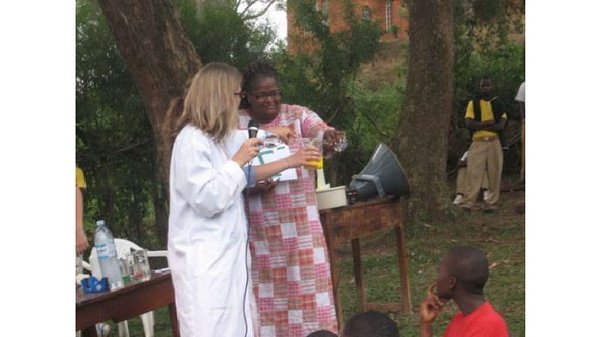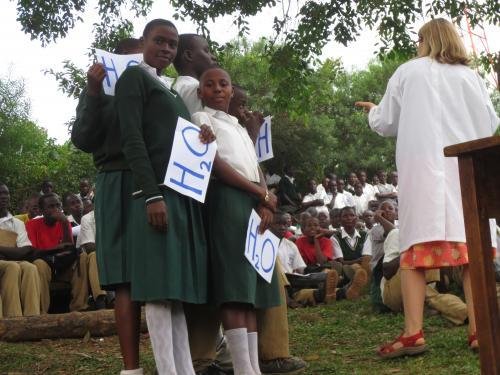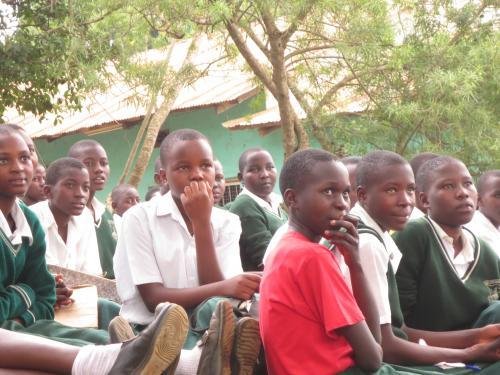A Chemist Without Borders Posted: Mar 07, 2013
March 7, 2013

Though it was her husband’s political science research that brought her to Uganda, chemistry professor Jennifer Nielson started a project of her own. She began with a simple question—What’s happening with science in Uganda? What she found surprised her.
“The conditions teachers had to work in were pretty abysmal,” said Nielson. “I couldn’t believe how little resources there were, even at the university.”
In many schools, they didn’t even have waste disposal.
“I watched a high school principal, after we finished one demonstration, pour lead iodide [a toxic chemical] into a hole in the middle of the play yard.”
This lack of resources wasn’t the only problem teachers faced. What Nielson said teachers want and need more of is experimentation.
“That’s what science is, right? Experimenting. And the kids aren’t getting a chance to do that.”
Last summer, Nielson began working alongside her Ugandan colleagues to change that by bringing experiments to kids through “green” chemistry demonstrations. These “kitchen experiments” don’t require a lot of toxic chemicals, and teachers can replicate them with the resources they have.
Next summer, her project will expand to two workshops: one for teachers and one for in-service teachers at the university (students who are getting degrees in order to teach science).
Nielson and one of her students, whose family is from Uganda’s neighboring country Congo, will focus these workshops on bringing experimentation to the classroom.
“Right now we’re preparing experiments where you don’t need anything special. You don’t need a special apparatus. You can handle them with gloves. There’s no special equipment, and most of the waste can be poured down the drain,” said Nielson.
She hopes that these workshops will offer teachers new ways to actively involve their students in their lessons with experiments that inspire students to ask questions. If the project is successful, it will also be self-sustaining.
“If we can get a core set of teachers experimenting, then they can better prepare students, and some of them can become the science teachers who later go back out.”
These programs have the potential to change the way science is taught in Uganda, and the teachers are eager for that change.
“I think Uganda really wants this technology. Changing their science teaching with more experimentation and critical thinking activities will help them get there faster.”
By Carly Huchendorf, College of Physical and Mathematical Sciences


Read more here:
Dr. Nielson Visits Uganda
by Rachael Roselle, Department of Chemistry and Biochemistry
During her visit to Kampala, Uganda, Dr. Jennifer Nielson taught chemistry principles during a Chemistry Magic Show for 200+ high school students. Betty Kituyi from Cafe Scientifique was wonderful to organize the event for Dr. Nielson. Also, professors at the neighboring Kyambogo University (KYU) kindly donated the supplies in order to make the magic show possible. One of the reactions demonstrated was the creation of a lead iodide precipitate (yellow solution, same yellow that is a color on the Ugandan flag) by adding potassium iodide to lead nitrate. This reaction is shown by the following equation:
Pb(NO3)2 + 2KI => PbI2 + 2KNO3